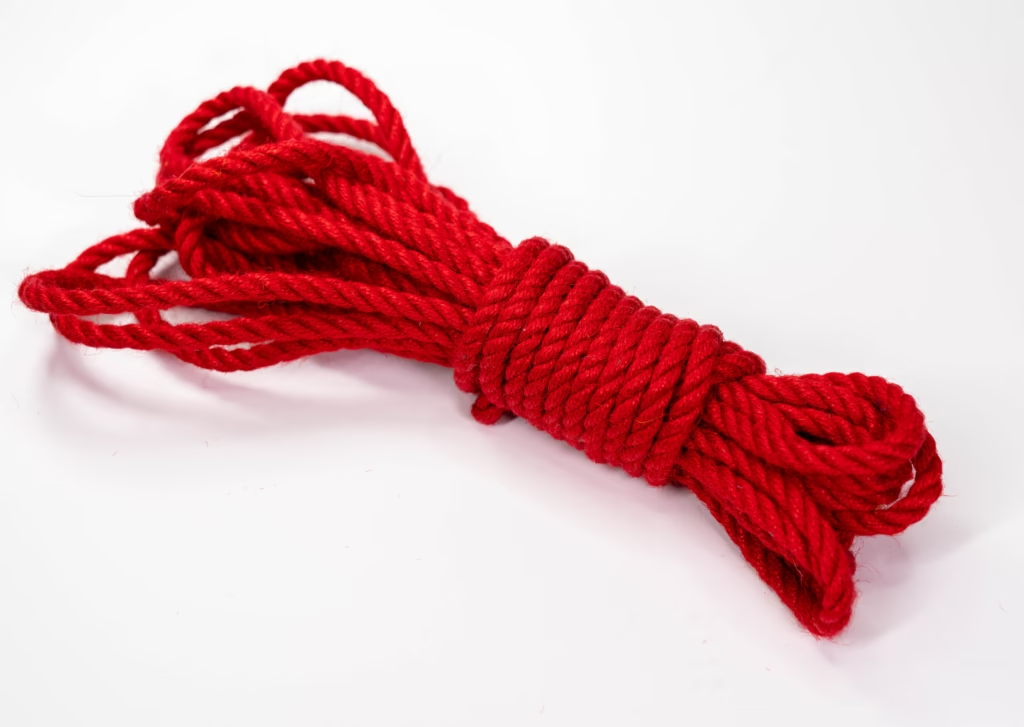Shibari (縛り), the intricate Japanese art of rope bondage, is an evocative practice blending aesthetics, physical restraint, and deep trust between participants. Among its various techniques, shibari suspension (吊り縛り, tsuri shibari) stands as one of the most visually striking and technically demanding forms. It requires skill, preparation, and an acute understanding of both the human body and the properties of rope.
The Essence of Shibari Suspension
Suspension in shibari involves lifting a person partially or entirely off the ground using strategically placed rope harnesses (縄拘束, nawa kousoku). Unlike simple floor ties, suspension intensifies sensations, engages the body in a unique manner, and demands absolute attentiveness to safety and communication. The practice is deeply rooted in the principles of tension (緊張, kinchou), symmetry (対称, taishou), and the elegant interplay of restriction and freedom. A properly executed suspension highlights the beauty of the human form, with the rope (縄, nawa) serving as both a medium of support and an artistic embellishment.
Safety First: The Foundations of Suspension
Shibari suspension is not to be taken lightly. Unlike floor ties, which allow for some room to adjust and reposition, suspension introduces significant risks, including nerve compression, circulation issues, and falls. Here are key safety guidelines:
Proper Training: Those performing suspension should seek education from experienced practitioners or attend dedicated workshops. Learning under supervision helps avoid common mistakes that could lead to injuries.
Understanding Rope and Knots: The choice of rope (typically jute or hemp) and the knowledge of tying strong yet comfortable harnesses (縄ハーネス, nawa hānesu) are crucial. Natural fiber ropes are preferred due to their texture, strength, and slight elasticity.
Body Awareness: Rope affects circulation and nerve pathways; thus, knowing anatomical pressure points (圧力点, atsuryokuten) is essential. Areas like the upper arms, wrists, and thighs are particularly vulnerable to nerve compression.
Spotting and Emergency Response: Having cutting tools like safety shears (安全ばさみ, anzen basami) on hand and understanding emergency procedures can prevent injury. It is advisable to have a second person available to assist in case of emergencies.
Communication: The bottom (the person being tied, 受け手, ukete) should have a clear way to communicate discomfort or distress, using verbal or nonverbal signals. A pre-established safe word or tapping system can ensure quick intervention if needed.
Types of Suspension in Shibari
There are multiple styles of suspension, each with its own visual appeal and physical experience. Some common variations include:
Partial Suspension (部分吊り, bubun tsuri): The bottom remains in contact with the ground while some limbs or the torso are lifted. This is an excellent starting point for those new to suspension.
Face-Up (Supine) Suspension (仰向け吊り, aomuke tsuri): A comfortable, less strenuous form where the bottom is suspended on their back. It allows for breath control and relaxation, making it ideal for extended scenes.
Face-Down (Prone) Suspension (うつ伏せ吊り, utsubuse tsuri): More challenging, this creates a dynamic, intense experience. The position can be physically demanding but offers striking visual aesthetics.
Side Suspension (横吊り, yoko tsuri): The body is held horizontally in midair, often for artistic photography. This style allows for elegant, flowing poses.
Inverted Suspension (逆さ吊り, sakasa tsuri): A dramatic and highly demanding position where the bottom is suspended upside-down. This requires advanced skill, as prolonged inversion can affect blood flow and balance.
Dynamic Suspension (動的吊り, dōteki tsuri): Incorporating movement, such as spinning or swinging, adding an additional layer of challenge and engagement.
The Role of Trust and Connection
Shibari is not just about technique; it is a profound exchange of trust (信頼, shinrai). The top (rigger, 縛り手, shibarite) and bottom (ukete) must share a deep understanding of limits, consent (合意, gōi), and mutual respect. Negotiating expectations before a scene is crucial—discussing pain tolerance, desired positions, and exit strategies ensures a positive experience.
Clear aftercare (アフターケア, afutākea), including checking for rope marks, addressing any discomfort, and ensuring the well-being of both parties, is an essential part of the experience. Post-suspension care might involve massage, hydration, and emotional support, as the body and mind process the intensity of the experience.
Aesthetic and Emotional Dimensions
Beyond its technical aspects, shibari suspension is an artistic expression (芸術的表現, geijutsuteki hyougen). Whether performed for intimate exploration, stage performances, or photography, it showcases the body’s grace, vulnerability, and resilience. The contrast between soft skin and rough rope, the fluidity of movement in midair, and the interplay of light and shadow all contribute to its mesmerizing appeal.
Many practitioners find deep emotional and even meditative experiences through the act of being bound and suspended. For some, it is a form of surrender (降伏, kōfuku) and catharsis, while for others, it is an avenue of artistic exploration. The interplay between tension and release, both physically and emotionally, makes suspension a uniquely transformative practice.
Equipment and Setup Considerations
Suspension requires specialized equipment and careful preparation. Key components include:
Suspension Points (吊り点, tsuri ten): Sturdy beams, ceiling hooks, or metal frames designed to support weight safely.
Carabiners and Rings (カラビナとリング, karabina to ringu): Used to distribute load and allow for adjustments in positioning.
Padding (クッション材, kusshon-zai): Knee pads or additional rope layers can help prevent discomfort and pressure sores.
Testing the Setup: Before lifting the bottom off the ground, ensure all knots and rigging points are secure.
Shibari suspension is a mesmerizing and complex art that demands patience, dedication, and respect for both the practice and the people involved. When approached with knowledge and care, it can offer breathtaking beauty, intense physicality, and profound emotional depth, making it one of the most captivating aspects of rope bondage. Whether practiced for personal exploration, performance, or artistic expression, shibari suspension remains a deeply rewarding journey for those willing to embrace its intricacies.
